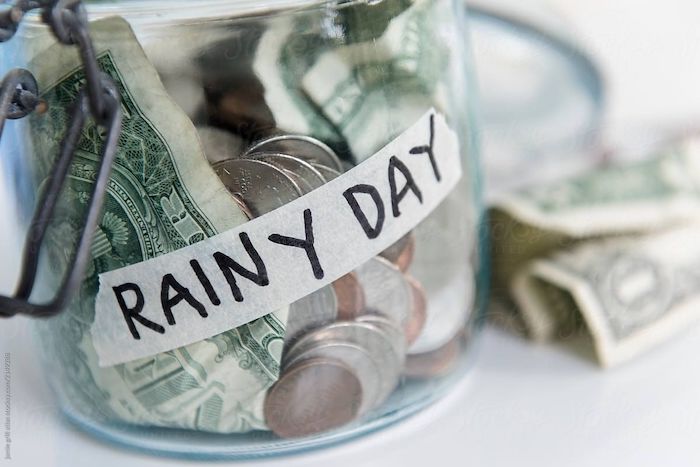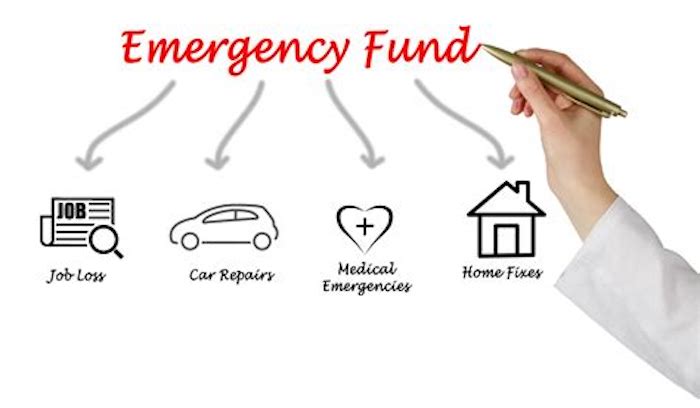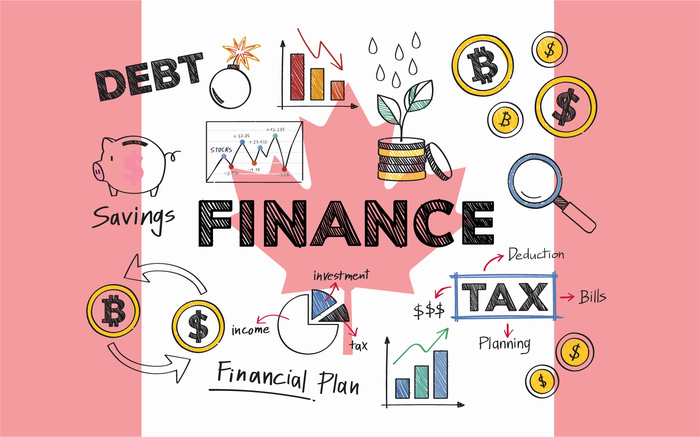Are you looking for ways to your finances? Having a rainy day fund of the best way to do this. A rainy day emergency fund can help cover unexpected expenses and provide financial security. This article will discuss the benefits of having a rainy day fund and how to start one. By having a rainy day fund, you can protect yourself from financial hardship and enjoy peace of mind.
The Benefits of Establishing a Rainy Day Fund
Building a financial safety net is crucial for individuals and families seeking to achieve financial stability. One essential component of this safety net is a rainy day fund, which serves as a dedicated savings account to address unforeseen expenses and provide support during challenging financial circumstances. By maintaining a rainy day fund, you can avoid resorting to debt to cover unexpected costs, such as medical bills, car repairs, or unemployment. This fund acts as a buffer, providing financial security and peace of mind in times of uncertainty.
Having a rainy day fund can provide peace of mind and help you to stay on track with your financial goals. By having a savings account dedicated to unexpected expenses, you can avoid scrambling to find the money when an emergency arises. Additionally, having a rainy day fund can help you avoid taking on debt, which can be difficult to pay off and hurt your credit score.
Creating a rainy day fund is essential for maintaining financial stability and staying aligned with long-term financial objectives. By having a dedicated savings account for unexpected expenses, you can prevent tapping into your retirement or other savings accounts during emergencies. This ensures that you stay on track with your finances and have the necessary funds readily available when needed.
Moreover, a rainy day fund serves as a safeguard against relying on credit cards to cover unforeseen expenses. While credit cards offer convenience, they can lead to substantial debt if balances are not paid off in full each month. With a well-established rainy day fund, you can avoid incurring high-interest debt associated with credit card usage.
In summary, establishing a rainy day fund is a fundamental step in building financial security. By having a designated savings account for unexpected expenses, you can avoid debt, maintain your financial goals, and steer clear of overreliance on credit cards.
Tips for Building a Rainy Day Fund
Creating a contingency fund is a vital aspect of financial planning. A contingency fund serves as a designated savings account for unforeseen expenses or emergencies, helping you avoid accumulating debt in such situations.
To effectively build a contingency fund, consider the following tips:
- Set a specific goal: Determine the amount you want to save in your contingency fund and establish a timeline for achieving that target. Having a clear goal will keep you motivated and focused on your savings.
- Make saving a priority: Allocate a fixed amount each month towards your contingency fund. Set up an automatic transfer from your checking account to your savings account, ensuring consistent savings without conscious effort.
- Seek opportunities to save: Explore ways to save money in your daily life. This could involve cutting unnecessary expenses, taking advantage of discounts, or finding opportunities to reduce your bills. Every small saving contributes to your fund’s growth and accelerates progress toward your goal.
- Stay disciplined: It may be tempting to dip into your contingency fund for non-emergency expenses. However, it is crucial to maintain discipline and only utilize the funds for genuine unexpected circumstances.
Building a contingency fund is a crucial element of financial planning. By implementing these tips, you can commence the process of establishing your contingency fund, ensuring financial preparedness for any unexpected expenses that may arise.
Strategies for Saving Money for a Rainy Day Fund
Establishing a contingency fund is a crucial aspect of financial planning. It ensures you have a reserve of money specifically designated for unexpected expenses or emergencies, allowing you to avoid accumulating debt and providing a sense of security.
To effectively save for a contingency fund, consider the following strategies:
- Start small: Beginning with small contributions is key, as it may be challenging to set aside a large sum all at once. Even saving a few dollars each month can accumulate over time.
- Automate your savings: Set up automatic transfers from your checking account to your savings account. This eliminates the need to remember to save each month and helps ensure consistent contributions. Additionally, arrange for a direct deposit from your paycheck to your savings account, effortlessly growing your fund.
- Trim expenses: Look for opportunities to reduce your expenses and save money. Evaluate your grocery bills, utilities, and other expenses, seeking ways to cut back. This frees up additional funds to allocate towards your contingency fund.
- Explore high-yield savings accounts: Consider opening a high-yield savings account, which offers a higher interest rate than a regular savings account. This enables your money to grow faster, making it easier to reach your savings goals.
Having a contingency fund is a fundamental element of financial planning. It allows you to prepare for unexpected expenses and grants peace of mind, knowing you have financial resources readily available when needed. By implementing these strategies, you can commence saving for your contingency fund and establish a financial safety net for the future.
Understanding the Benefits of Having a Rainy Day Fund
Establishing a rainy day fund is a crucial component of financial planning. It involves setting aside a designated amount of money to prepare for unforeseen expenses or emergencies. This fund serves as a protective measure for you and your family, safeguarding against potential financial hardships.
The significance of a rainy day fund lies in its ability to provide a safety net during emergencies. Life is unpredictable, and unexpected expenses such as medical bills, car repairs, or home maintenance can arise at any time. By having a rainy day fund, you can readily cover these costs without resorting to loans or credit card debt.
Furthermore, a rainy day fund helps you avoid accumulating debt. When faced with an emergency expense that exceeds your available funds, the temptation to rely on loans or credit cards may arise. However, this can lead to a cycle of debt and higher interest rates. By having a rainy day fund, you can break this cycle and proactively address unforeseen expenses without resorting to borrowing.
Having a rainy day fund also facilitates long-term planning. When unexpected expenses arise, you can utilize funds from your rainy day fund, thereby preserving your financial resources for other goals such as retirement savings or dream vacations.
Lastly, a rainy day fund helps you maintain financial discipline and stay on track with your budget. Rather than making adjustments to your budget when faced with an unexpected expense, you can tap into your rainy day fund, ensuring your financial goals remain intact.
In conclusion, incorporating a rainy day fund into your financial planning is essential. It provides a buffer for unexpected expenses, enables debt avoidance, supports future planning, and helps you adhere to your budget. By setting aside money for a rainy day fund, you proactively protect yourself and your family from potential financial hardships.
How to Use a Rainy Day Fund to Safeguard Your Finances
A rainy day fund is an important part of any financial plan. It is a reserve of money you can use to cover unexpected expenses or help you get through a difficult financial period. A rainy day fund can help safeguard your finances and provide peace of mind.
Establishing a rainy day fund starts with assessing the amount of money you should save, which varies based on your individual financial circumstances. Generally, experts recommend aiming for a savings equivalent to three to six months’ worth of expenses. This will serve as a safety net in case of job loss, medical emergencies, or any unforeseen financial obligations.
Once you have determined the target amount, you can begin setting aside money on a regular basis. Automating the process through automatic transfers from your checking account to a dedicated savings account can help ensure consistent contributions and reduce the temptation to spend the funds.
When selecting a savings account for your rainy day fund, prioritize those with high-interest rates and no fees. This way, your savings can grow more effectively, amplifying the benefits of having a rainy day fund. Alternatively, you might consider a money market account that offers better interest rates and increased liquidity compared to a conventional savings account.
It is vital to remember that your rainy day fund should only be utilized for genuine emergencies. If you find yourself needing to tap into these funds, make it a priority to replenish them as soon as possible. This approach will help maintain the fund’s effectiveness and ensure you are consistently prepared for unexpected circumstances.
By setting up a rainy day fund, you can fortify your financial well-being and experience peace of mind. This reserve will serve as a vital resource during challenging times, providing a cushion for unexpected expenses. Remember to determine your savings goal, choose an appropriate savings account, and use the funds judiciously for emergencies.




